- Home
- J. K. Rowling
The Hogwarts Library Collection Page 3
The Hogwarts Library Collection Read online
Page 3
* * *
15. The centaur is given an XXXX classification not because it is unduly aggressive, but because it should be treated with great respect. The same applies to merpeople and unicorns.
16. In the absence of magic, Chizpurfles have been known to attack electrical objects from within (for a fuller understanding of what electricity is, see Home Life and Social Habits of British Muggles, Wilhelm Wigworthy, Little Red Books, 1987). Chizpurfle infestations explain the puzzling failure of many relatively new Muggle electrical artefacts.
DEMIGUISE
M.O.M. CLASSIFICATION: XXXX
The Demiguise is found in the Far East, though only with great difficulty, for this beast is able to make itself invisible when threatened and can be seen only by wizards skilled in its capture.
The Demiguise is a peaceful herbivorous beast, something like a graceful ape in appearance, with large, black, doleful eyes more often than not hidden by its hair. The whole body is covered with long, fine, silky, silvery hair. Demiguise pelts are highly valued as the hair may be spun into Invisibility Cloaks.
DIRICAWL
M.O.M. CLASSIFICATION: XX
The Diricawl originated in Mauritius. A plump-bodied, fluffy-feathered, flightless bird, the Diricawl is remarkable for its method of escaping danger. It can vanish in a puff of feathers and reappear elsewhere (the phoenix shares this ability).
Interestingly, Muggles were once fully aware of the existence of the Diricawl, though they knew it by the name of ‘dodo’. Unaware that the Diricawl could vanish at will, Muggles believe they have hunted the species to extinction. As this seems to have raised Muggle awareness of the dangers of slaying their fellow creatures indiscriminately, the International Confederation of Wizards has never deemed it appropriate that the Muggles should be made aware of the continued existence of the Diricawl.
DOXY
(sometimes known as Biting fairy)
M.O.M. CLASSIFICATION: XXX
The Doxy is often mistaken for a fairy though it is a quite separate species. Like the fairy, it has a minute human form, though in the Doxy’s case this is covered in thick black hair and has an extra pair of arms and legs. The Doxy’s wings are thick, curved and shiny, much like a beetle’s. Doxys are found throughout northern Europe and America, preferring cold climates. They lay up to five hundred eggs at a time and bury them. The eggs hatch in two to three weeks. Doxys have double rows of sharp, venomous teeth. An antidote should be taken if bitten.
DRAGON
M.O.M. CLASSIFICATION: XXXXX
Probably the most famous of all magical beasts, dragons are among the most difficult to hide. The female is generally larger and more aggressive than the male, though neither should be approached by any but highly skilled and trained wizards. Dragon hide, blood, heart, liver and horn all have highly magical properties, but dragon eggs are defined as Class A Non-Tradeable Goods.
There are ten breeds of dragon, though these have been known to interbreed on occasion, producing rare hybrids. Pure-bred dragons are as follows:
ANTIPODEAN OPALEYE
The Opaleye is a native of New Zealand, though it has been known to migrate to Australia when territory becomes scarce in its native land. Unusually for a dragon, it dwells in valleys rather than mountains. It is of medium size (between two and three tonnes). Perhaps the most beautiful type of dragon, it has iridescent, pearly scales and glittering, multi-coloured, pupil-less eyes, hence its name. This dragon produces a very vivid scarlet flame, though by dragon standards it is not particularly aggressive and will rarely kill unless hungry. Its favourite food is sheep, though it has been known to attack larger prey. A spate of kangaroo killings in the late 1970s were attributed to a male Opaleye ousted from his homeland by a dominant female. Opaleye eggs are pale grey and may be mistaken for fossils by unwary Muggles.
CHINESE FIREBALL
(sometimes known as Liondragon)
The only Oriental dragon has a particularly striking appearance. Scarlet and smooth-scaled, it has a fringe of golden spikes around its snub-snouted face and extremely protuberant eyes. The Fireball gained its name for the mushroom-shaped flame that bursts from its nostrils when it is angered. It weighs between two and four tonnes, the female being larger than the male. Eggs are a vivid crimson speckled with gold and the shells are much prized for use in Chinese wizardry. The Fireball is aggressive but more tolerant of its own species than most dragons, sometimes consenting to share its territory with up to two others. The Fireball will feast on most mammals, though it prefers pigs and humans.
COMMON WELSH GREEN
The Welsh Green blends well with the lush grass of its homeland, though it nests in the higher mountains, where a reservation has been established for its preservation. The Ilfracombe Incident notwithstanding, this breed is among the least troublesome of the dragons, preferring, like the Opaleye, to prey on sheep and actively avoiding humans unless provoked. The Welsh Green has an easily recognisable and surprisingly melodious roar. Fire is issued in thin jets. The Welsh Green’s eggs are an earthy brown, flecked with green.
HEBRIDEAN BLACK
Britain’s other native dragon is more aggressive than its Welsh counterpart. It requires a territory of as much as a hundred square miles per dragon. Up to thirty feet in length, the Hebridean Black is rough-scaled, with brilliant purple eyes and a line of shallow but razor-sharp ridges along its back. Its tail is tipped by an arrow-shaped spike and it has bat-like wings. The Hebridean Black feeds mostly on deer, though it has been known to carry off large dogs and even cattle. The wizard clan MacFusty, who have dwelled in the Hebrides for centuries, have traditionally taken responsibility for the management of their native dragons.
HUNGARIAN HORNTAIL
Supposedly the most dangerous of all dragon breeds, the Hungarian Horntail has black scales and is lizard-like in appearance. It has yellow eyes, bronze horns and similarly coloured spikes that protrude from its long tail. The Horntail has one of the longest fire-breathing ranges (up to fifty feet). Its eggs are cement-coloured and particularly hard-shelled; the young club their way out using their tails, whose spikes are well developed at birth. The Hungarian Horntail feeds on goats, sheep and, whenever possible, humans.
NORWEGIAN RIDGEBACK
The Norwegian Ridgeback resembles the Horntail in most respects, though instead of tail spikes it sports particularly prominent jet-black ridges along its back. Exceptionally aggressive to its own kind, the Ridgeback is nowadays one of the rarer dragon breeds. It has been known to attack most kinds of large land mammal and, unusually for a dragon, the Ridgeback will also feed on water-dwelling creatures. An unsubstantiated report alleges that a Ridgeback carried off a whale calf off the coast of Norway in 1802. Ridgeback eggs are black and the young develop fire-breathing abilities earlier than other breeds (at between one and three months).
PERUVIAN VIPERTOOTH
This is the smallest of all known dragons, and the swiftest in flight. A mere fifteen feet or so in length, the Peruvian Vipertooth is smooth-scaled and copper-coloured with black ridge markings. The horns are short and the fangs are particularly venomous. The Vipertooth will feed readily on goats and cows, but has such a liking for humans that the International Confederation of Wizards was forced to send in exterminators in the late nineteenth century to reduce Vipertooth numbers, which had been increasing with alarming rapidity.
ROMANIAN LONGHORN
The Longhorn has dark-green scales and long, glittering golden horns with which it gores its prey before roasting it. When powdered, these horns are highly valued as potion ingredients. The native territory of the Longhorn has now become the world’s most important dragon reservation, where wizards of all nationalities study a variety of dragons at close range. The Longhorn has been the subject of an intensive breeding programme because its numbers have fallen so low in recent years, largely because of the trade in its horns, which are now defined as a Class B Tradeable Material.
SWEDISH SHORT-SNOUT
The S
wedish Short-Snout is an attractive silvery-blue dragon whose skin is sought after for the manufacture of protective gloves and shields. The flame that issues from its nostrils is a brilliant blue and can reduce timber and bone to ash in a matter of seconds. The Short-Snout has fewer human killings to its name than most dragons, though as it prefers to live in wild and uninhabited mountainous areas, this is not much to its credit.
UKRAINIAN IRONBELLY
The largest breed of dragon, the Ironbelly has been known to achieve a weight of six tonnes. Rotund and slower in flight than the Vipertooth or the Longhorn, the Ironbelly is nevertheless extremely dangerous, capable of crushing dwellings on which it lands. The scales are metallic grey, the eyes deep red and the talons particularly long and vicious. Ironbellies have been subject to constant observation by the Ukrainian wizarding authorities ever since an Ironbelly carried off a (mercifully empty) sailing boat from the Black Sea in 1799.
DUGBOG
M.O.M. CLASSIFICATION: XXX
The Dugbog is a marsh-dwelling creature found in Europe and North and South America. It resembles a piece of dead wood while stationary, though closer examination will reveal finned paws and very sharp teeth. It glides and slithers through marshland, feeding mainly on small mammals, and will do severe injury to the ankles of human walkers. The Dugbog’s favourite food, however, is Mandrake. Mandrake-growers have been known to seize the leaves of one of their prize plants only to find a bloody mangled mess below owing to the attentions of a Dugbog.
ERKLING
M.O.M. CLASSIFICATION: XXXX
The Erkling is an elfish creature which originated in the Black Forest in Germany. It is larger than a gnome (three feet high on average), with a pointed face and a high-pitched cackle that is particularly entrancing to children, whom it will attempt to lure away from their guardians and eat. Strict controls by the German Ministry of Magic, however, have reduced Erkling killings dramatically over the last few centuries and the last known Erkling attack, upon the six-year-old wizard Bruno Schmidt, resulted in the death of the Erkling when Master Schmidt hit it very hard over the head with his father’s collapsible cauldron.
ERUMPENT
M.O.M. CLASSIFICATION: XXXX
The Erumpent is a large grey African beast of great power. Weighing up to a tonne, the Erumpent may be mistaken for a rhinoceros at a distance. It has a thick hide that repels most charms and curses, a large, sharp horn upon its nose and a long, rope-like tail. Erumpents give birth to only one calf at a time.
The Erumpent will not attack unless sorely provoked, but should it charge, the results are usually catastrophic. The Erumpent’s horn can pierce everything from skin to metal, and contains a deadly fluid which will cause whatever is injected with it to explode.
Erumpent numbers are not great, as males frequently explode each other during the mating season. They are treated with great caution by African wizards. Erumpent horns, tails and the Exploding Fluid are all used in potions, though classified as Class B Tradeable Materials (Dangerous and Subject to Strict Control).
FAIRY
M.O.M. CLASSIFICATION: XX
The fairy is a small and decorative beast of little intelligence.17 Often used or conjured by wizards for decoration, the fairy generally inhabits woodlands or glades. Ranging in height from one to five inches, the fairy has a minute humanoid body, head and limbs but sports large insect-like wings, which may be transparent or multi-coloured, according to type.
The fairy possesses a weak brand of magic that it may use to deter predators, such as the Augurey. It has a quarrelsome nature but, being excessively vain, it will become docile on any occasion when it is called to act as an ornament. Despite its human-like appearance, the fairy cannot speak. It makes a high-pitched buzzing noise to communicate with its fellows.
The fairy lays up to fifty eggs at a time on the underside of leaves. The eggs hatch into brightly coloured larvae. At the age of six to ten days these spin themselves a cocoon, from which they emerge one month later as fully formed winged adults.
FIRE CRAB
M.O.M. CLASSIFICATION: XXX
Despite its name, the Fire Crab greatly resembles a large tortoise with a heavily jewelled shell. In its native Fiji, a stretch of coast has been turned into a reservation for its protection, not only against Muggles, who might be tempted by its valuable shell, but also against unscrupulous wizards, who use the shells as highly prized cauldrons. The Fire Crab does, however, have its own defence mechanism: it shoots flames from its rear end when attacked. Fire Crabs are exported as pets but a special licence is necessary.
FLOBBERWORM
M.O.M. CLASSIFICATION: X
The Flobberworm lives in damp ditches. A thick brown worm reaching up to ten inches in length, the Flobberworm moves very little. One end is indistinguishable from the other, both producing the mucus from which its name is derived and which is sometimes used to thicken potions. The Flobberworm’s preferred food is lettuce, though it will eat almost any vegetation.
FWOOPER
M.O.M. CLASSIFICATION: XXX
The Fwooper is an African bird with extremely vivid plumage; Fwoopers may be orange, pink, lime green or yellow. The Fwooper has long been a provider of fancy quills and also lays brilliantly patterned eggs. Though at first enjoyable, Fwooper song will eventually drive the listener to insanity18 and the Fwooper is consequently sold with a Silencing Charm upon it, which will need monthly reinforcement. Fwooper owners require licences, as the creatures must be handled responsibly.
* * *
17. Muggles have a great weakness for fairies, which feature in a variety of tales written for their children. These ‘fairy tales’ involve winged beings with distinct personalities and the ability to converse as humans (though often in a nauseatingly sentimental fashion). Fairies, as envisaged by the Muggle, inhabit tiny dwellings fashioned out of flower petals, hollowed-out toadstools and similar. They are often depicted as carrying wands. Of all magical beasts the fairy might be said to have received the best Muggle press.
18. Uric the Oddball attempted at one time to prove that Fwooper song was actually beneficial to the health and listened to it for three months on end without a break. Unfortunately the Wizards’ Council to which he reported his findings were unconvinced, as he had arrived at the meeting wearing nothing but a toupee that on closer inspection proved to be a dead badger.
GHOUL
M.O.M. CLASSIFICATION: XX
The ghoul, though ugly, is not a particularly dangerous creature. It resembles a somewhat slimy, buck-toothed ogre and generally resides in attics or barns belonging to wizards, where it eats spiders and moths. It moans and occasionally throws objects around, but is essentially simple-minded and will, at worst, growl alarmingly at anyone who stumbles across it. A Ghoul Task Force exists at the Department for the Regulation and Control of Magical Creatures to remove ghouls from dwellings that have passed into Muggle hands, but in wizarding families the ghoul often becomes a talking point or even a family pet.
GLUMBUMBLE
M.O.M. CLASSIFICATION: XXX
The Glumbumble (northern Europe) is a grey, furry-bodied flying insect that produces melancholy-inducing treacle, which is used as an antidote to the hysteria produced by eating Alihotsy leaves. It has been known to infest beehives, with disastrous effects on the honey. Glumbumbles nest in dark and secluded places such as hollow trees and caves. They feed on nettles.
GNOME
M.O.M. CLASSIFICATION: XX
The gnome is a common garden pest found throughout northern Europe and North America. It may reach a foot in height, with a disproportionately large head and hard, bony feet. The gnome can be expelled from the garden by swinging it in circles until dizzy and then dropping it over the garden wall. Alternatively a Jarvey may be used, though many wizards nowadays find this method of gnome-control too brutal.
GRAPHORN
M.O.M. CLASSIFICATION: XXXX
The Graphorn is found in mountainous European regions. Large and greyish pur
ple with a humped back, the Graphorn has two very long, sharp horns, walks on large, four-thumbed feet, and has an extremely aggressive nature. Mountain trolls can occasionally be seen mounted on Graphorns, though the latter do not seem to take kindly to attempts to tame them and it is more common to see a troll covered in Graphorn scars. Powdered Graphorn horn is used in many potions, though it is immensely expensive owing to the difficulty in collecting it. Graphorn hide is even tougher than a dragon’s and repels most spells.
GRIFFIN
M.O.M. CLASSIFICATION: XXXX
The griffin originated in Greece and has the front legs and head of a giant eagle, but the body and hind legs of a lion. Like sphinxes, griffins are often employed by wizards to guard treasure. Though griffins are fierce, a handful of skilled wizards have been known to befriend one. Griffins feed on raw meat.
GRINDYLOW
M.O.M. CLASSIFICATION: XX
A horned, pale-green water demon, the Grindylow is found in lakes throughout Britain and Ireland. It feeds on small fish and is aggressive towards wizards and Muggles alike, though merpeople have been known to domesticate it. The Grindylow has very long fingers, which, though they exert a powerful grip, are easy to break.

 Harry Potter and the Philosophers Stone
Harry Potter and the Philosophers Stone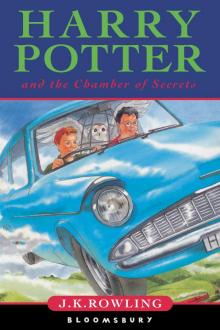 Harry Potter and the Chamber of Secrets
Harry Potter and the Chamber of Secrets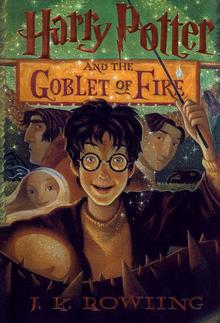 Harry Potter and the Goblet of Fire
Harry Potter and the Goblet of Fire Harry Potter and the Deathly Hallows
Harry Potter and the Deathly Hallows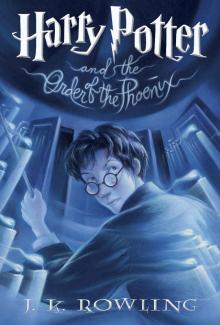 Harry Potter and the Order of the Phoenix
Harry Potter and the Order of the Phoenix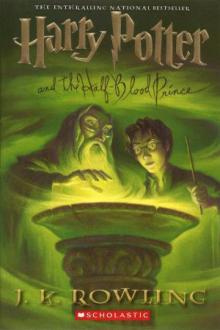 Harry Potter and the Half-Blood Prince
Harry Potter and the Half-Blood Prince Harry Potter and the Prisoner of Azkaban
Harry Potter and the Prisoner of Azkaban Fantastic Beasts and Where to Find Them
Fantastic Beasts and Where to Find Them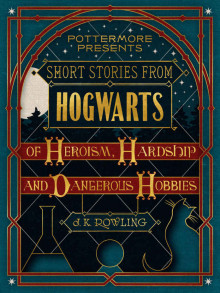 Short Stories from Hogwarts of Heroism, Hardship and Dangerous Hobbies
Short Stories from Hogwarts of Heroism, Hardship and Dangerous Hobbies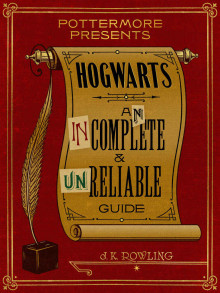 Hogwarts: An Incomplete and Unreliable Guide
Hogwarts: An Incomplete and Unreliable Guide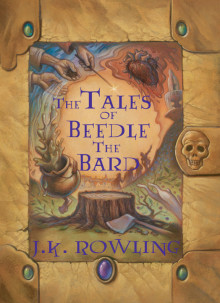 The Tales of Beedle the Bard
The Tales of Beedle the Bard The Casual Vacancy
The Casual Vacancy Harry Potter and the Cursed Child
Harry Potter and the Cursed Child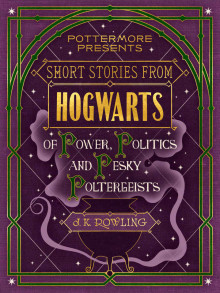 Short Stories from Hogwarts of Power, Politics and Pesky Poltergeists
Short Stories from Hogwarts of Power, Politics and Pesky Poltergeists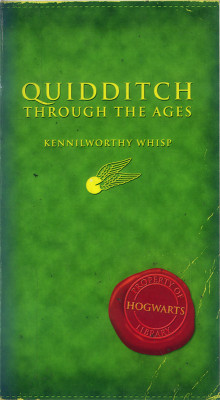 Quidditch Through the Ages
Quidditch Through the Ages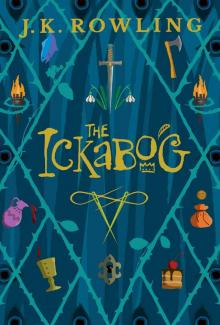 The Ickabog
The Ickabog![Fantastic Beasts, The Crimes of Grindelwald [UK] Read online](http://i1.bookreadfree.com/i/03/19/fantastic_beasts_the_crimes_of_grindelwald_uk_preview.jpg) Fantastic Beasts, The Crimes of Grindelwald [UK]
Fantastic Beasts, The Crimes of Grindelwald [UK]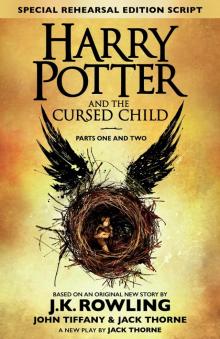 Harry Potter and the Cursed Child: Parts One and Two
Harry Potter and the Cursed Child: Parts One and Two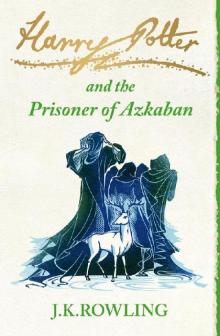 The Prisoner of Azkaban
The Prisoner of Azkaban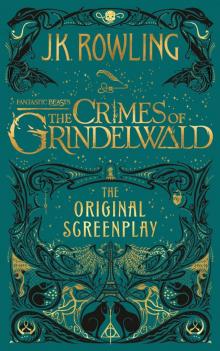 Fantastic Beasts: The Crimes of Grindelwald
Fantastic Beasts: The Crimes of Grindelwald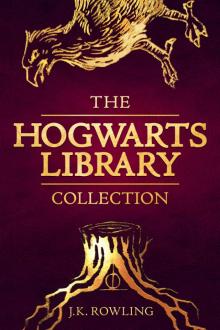 The Hogwarts Library Collection
The Hogwarts Library Collection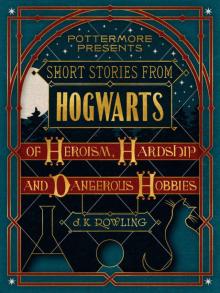 Short Stories from Hogwarts of Heroism, Hardship and Dangerous Hobbies (Kindle Single) (Pottermore Presents)
Short Stories from Hogwarts of Heroism, Hardship and Dangerous Hobbies (Kindle Single) (Pottermore Presents)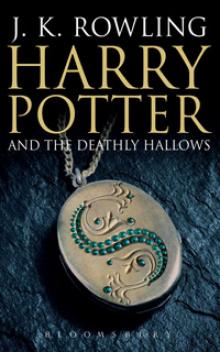 Harry Potter and the Deathly Hallows hp-7
Harry Potter and the Deathly Hallows hp-7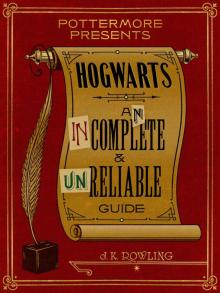 Hogwarts: An Incomplete and Unreliable Guide (Kindle Single) (Pottermore Presents)
Hogwarts: An Incomplete and Unreliable Guide (Kindle Single) (Pottermore Presents)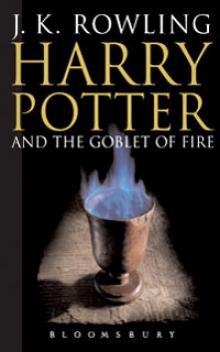 Harry Potter and the Goblet of Fire hp-4
Harry Potter and the Goblet of Fire hp-4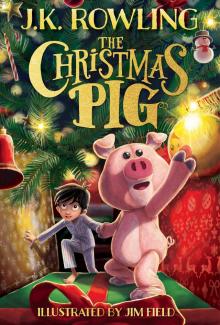 The Christmas Pig
The Christmas Pig Harry Potter and the Sorcerer's Stone
Harry Potter and the Sorcerer's Stone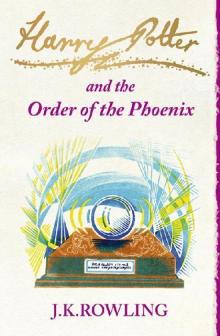 The Order of the Phoenix
The Order of the Phoenix Harry Potter and the Prisoner of Azkaban hp-3
Harry Potter and the Prisoner of Azkaban hp-3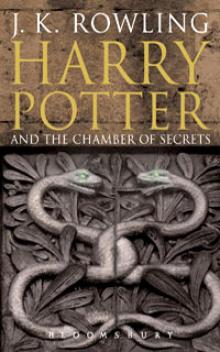 Harry Potter and the Chamber of Secrets hp-2
Harry Potter and the Chamber of Secrets hp-2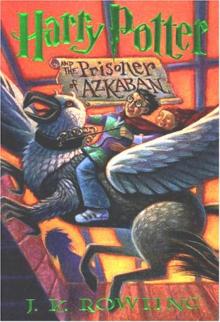 HP 3 - Harry Potter and the Prisoner of Azkaban
HP 3 - Harry Potter and the Prisoner of Azkaban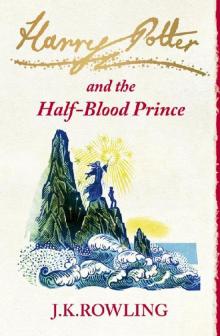 The Half-Blood Prince
The Half-Blood Prince The Hogwarts Collection
The Hogwarts Collection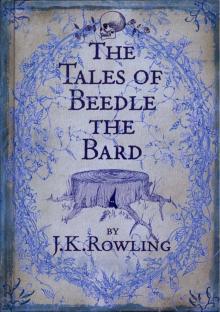 Tales of Beedle the Bard
Tales of Beedle the Bard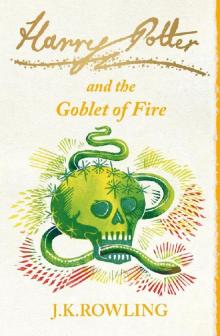 The Goblet of Fire
The Goblet of Fire Harry Potter and the Half-Blood Prince hp-6
Harry Potter and the Half-Blood Prince hp-6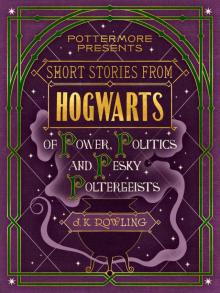 Short Stories from Hogwarts of Power, Politics and Pesky Poltergeists (Kindle Single) (Pottermore Presents)
Short Stories from Hogwarts of Power, Politics and Pesky Poltergeists (Kindle Single) (Pottermore Presents)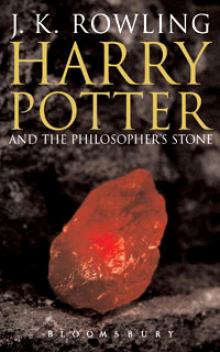 Harry Potter and the Sorcerer's Stone hp-1
Harry Potter and the Sorcerer's Stone hp-1